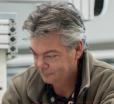Standardisation of scientific measurement milestone recognised
2025 marks the 150th anniversary of the signing of the Metre Convention—a milestone that underscores a century and a half of international collaboration in measurement science. T

Showing 321 - 340 of 769 results
2025 marks the 150th anniversary of the signing of the Metre Convention—a milestone that underscores a century and a half of international collaboration in measurement science. T


The Environment Research and Technology Group has a range of analytical services to support environmental research.

ANSTO and the Australian Radiation Protection and Nuclear Safety Agency (ARPANSA) have been recognised for their valuable contributions to the search and recovery efforts for a missing 8mm-long radioactive capsule in the Western Australian outback.
Ultra-flexible electronics has many potential applications within areas such as for example the military, healthcare and energy.
Australian-first detector to accelerate cancer research unveiled.
ANSTO recently re-started the OPAL Reactor after a six-month shutdown for essential maintenance and the installation of an upgraded facility.

You are invited to submit to the various awards from ANSTO, User Advisory Committee (UAC) and Australian Neutron Beam User Group (ANBUG).
You are invited to submit to the various awards from ANSTO, User Advisory Committee (UAC) and Australian Neutron Beam User Group (ANBUG).
Australia part of global renaissance in fusion power research symbolised by ITER experiment

For over 45 years, ANSTO has provided consultancy and process development services to the mining and minerals processing industries in Australia and globally.
A delegation of Taiwanese officials and ANSTO staff celebrated the 10th anniversary of the operation of an advanced scientific instrument, a cold neutron triple axis spectrometer Sika on 4 September.
ANSTO provides access to specialised facilities and capabilities by application. Please ensure that you contact the relevant ANSTO scientist for advice before submitting a proposal.
New material shows enhanced conductivity for solid oxide fuel cells used in satellites, spacecraft, transport vehicles and as power source


Mr Andrew Carriline is an experienced senior business executive, commercially astute and highly skilled at operating successfully in regulated environments.
